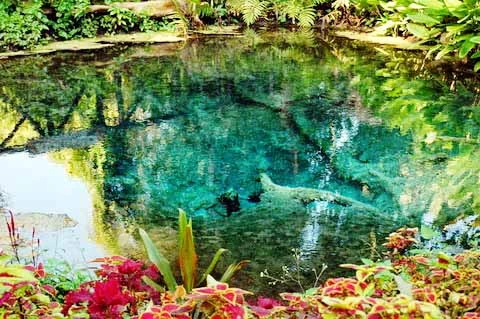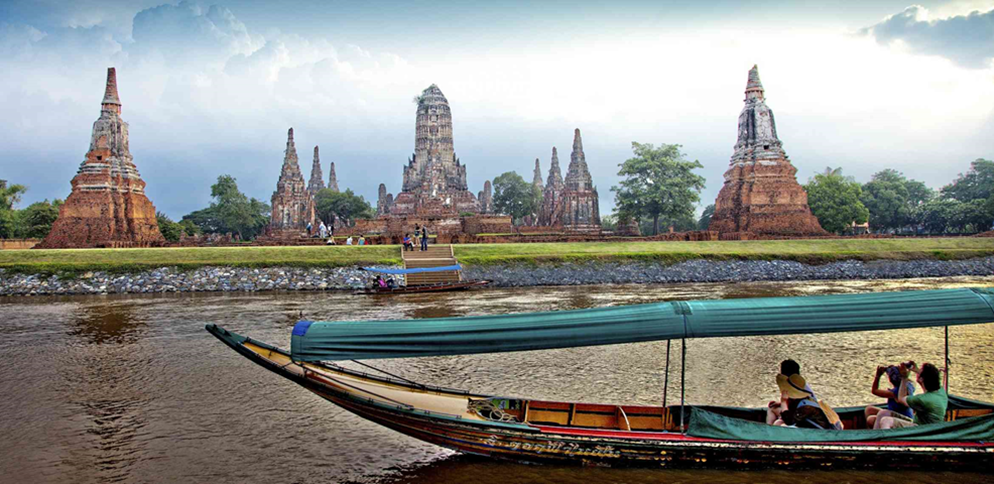
- Thailand|1 Days Tour

DAY 1 BANGKOK AYUTTHAYA ANG THONG KHAO YAI (L.)
Bang Pa-In Ayutthaya Historical Park Wat Muang Wat Sang Kratai approx. 260 km
DAY 2: KHAO YAI - BANGKOK. Khao Yai National Park, (B.L.)
Day 1
DAY 1 – BANGKOK – AYUTTHAYA – ANG THONG – KHAO YAI (L.)
Bang Pa-In • Ayutthaya Historical Park • Wat Muang • Wat Sang Kratai approx. 260 km
07:00 – Departure from hotel
Meet your Italian-speaking guide at the hotel lobby and start the journey to explore the ancient capital of the Siam Kingdom.
08:30 – Ayutthaya Historical Park
Visit the most significant temples:
Wat Mahathat – famous for the Buddha’s head entwined in tree roots.
Wat Phra Sri Sanphet – the most important temple of Ayutthaya, featuring three majestic chedis.
Wat Lokayasutharam – home to an impressive 42-meter reclining Buddha.
Wat Chaiwatthanaram – a beautiful Khmer-style riverside temple with panoramic views.
12:30 – Lunch at a local restaurant.
Afternoon – Ang Thong
Wat Muang – known for its 95-meter-high golden seated Buddha, the tallest in Thailand.
Wat Sang Kratai – an ancient temple intertwined with Bodhi tree roots.
17:30–18:30 – Arrival in Khao Yai and hotel check-in.
Evening at leisure.
Day 2
DAY 2 – KHAO YAI – BANGKOK (B.L.) Explore Khao Yai National Park – UNESCO World Heritage Site approx. 200 km
08:00 – Depart for Khao Yai National Park.
Thailand’s first national park (established in 1962), Khao Yai covers 2,168 km² of mountains, evergreen forests, and grasslands. With an average elevation of 400–1,000 m, the park is rich in biodiversity.
Highlights:
Wildlife spotting opportunities: wild elephants, macaques, deer, gibbons, and numerous bird species such as hornbills.
Short jungle trek to admire waterfalls and stunning landscapes.
Insight into the park’s flora and fauna by a naturalist guide.
12:30 – Lunch at a local restaurant.
Afternoon – Return to Bangkok.
Estimated arrival between 6:00 PM and 6:30 PM. For airport transfers, book flights after 8:30 PM.
INCLUDES:
Local guide
Air-conditioned vehicle
Entrance fees
2 lunches at local restaurants
1 night accommodation with breakfast
EXCLUDES:
Personal expenses
Drinks during meals
Tips
Anything not mentioned in the program
Unlimited Seats
CHIANG MAI STICKY WATERFALL & WALKING CITY TOUR (Lunch) Full Day Tour
View More10 Available Seats
Ultimate Program
19Platforms
9Ziplines (400M,500M, 700M)
1 Abseiling
1 Glass bridge
1Sky bridge
2 Iron bride
1Nature trail walk way
2Spiral staircase
1 Staircase
Pickup time
7.00 - 7.30 am
9.00 - 9.30 am
12.00 - 12.30 pm
13.00 - 13.30 pm
View MoreUnlimited Seats
BANGKOK - Rural Canals, Chinatown, 5-6 Hrs (L.)
Meet with the guide at 11:30 for an immersive exploration of the city using local transportation.
View More